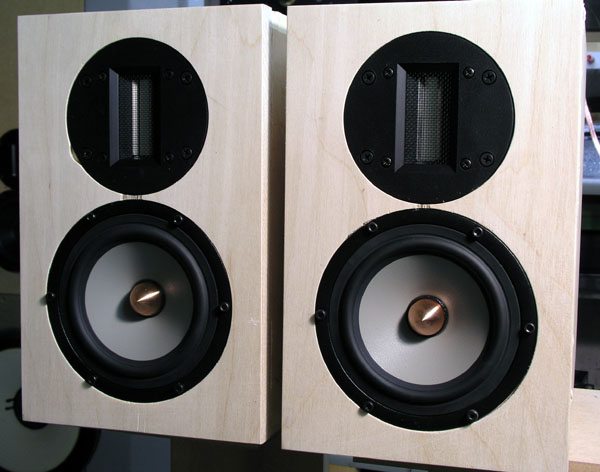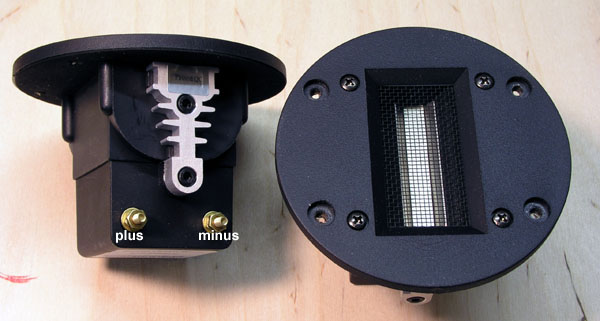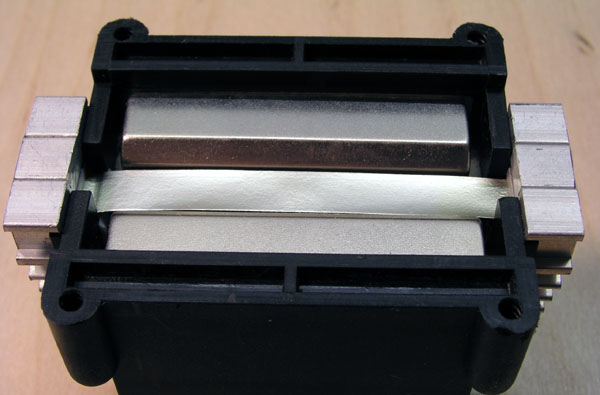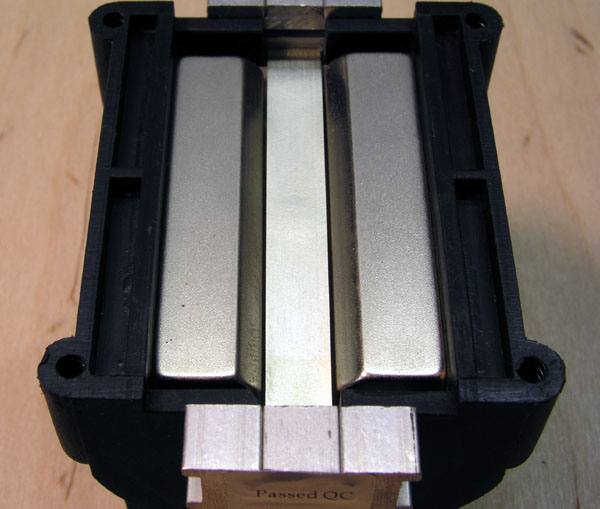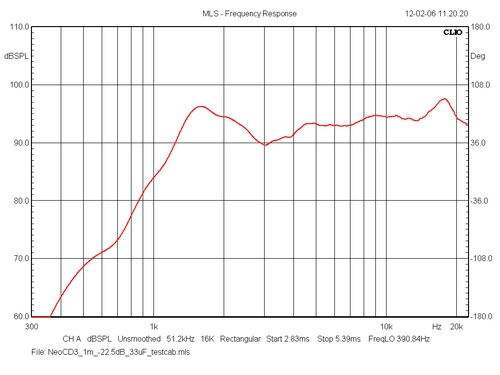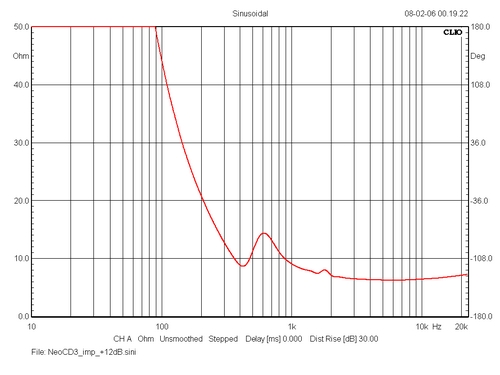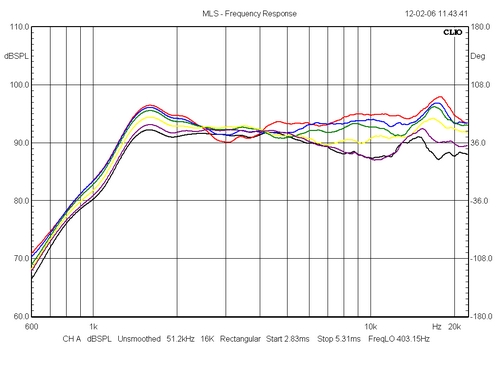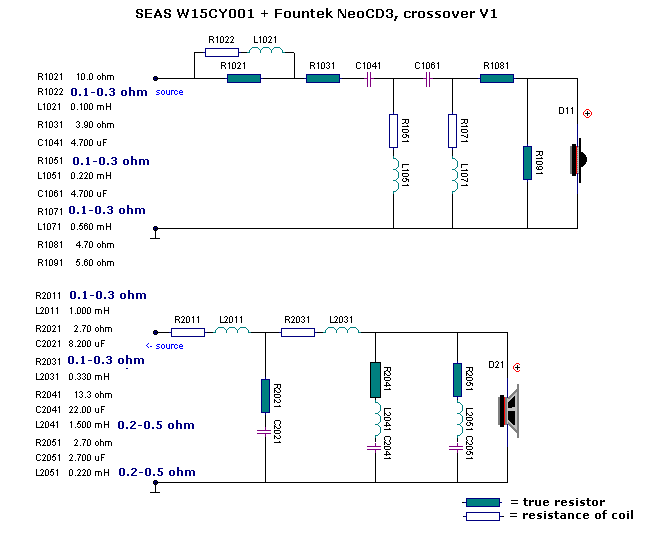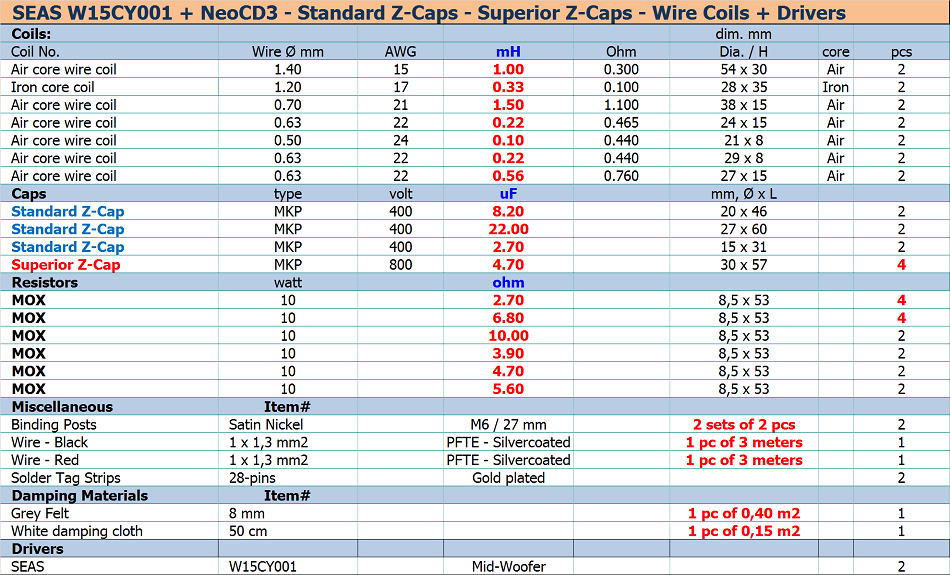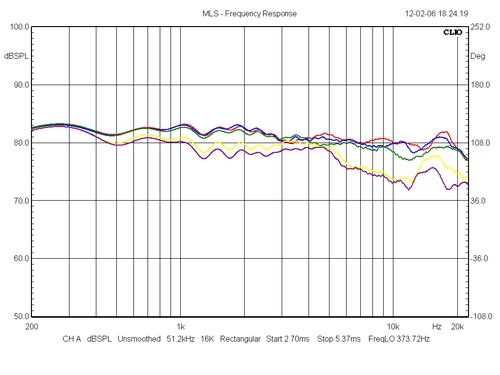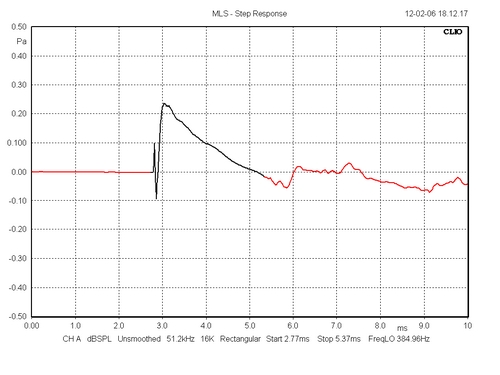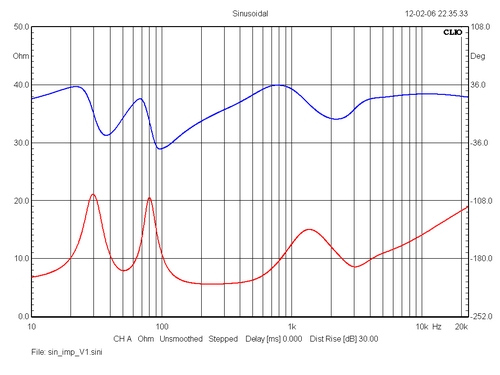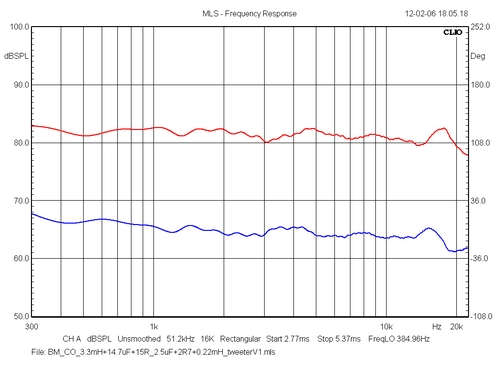SEAS W15CY001 + Fountek NeoCD3 CROSSOVER CABINET SPEAKER-KIT MEASUREMENTS
I
recently had a pair the new Fountek NeoCD3
ribbon tweeters and have compared them to the JP3 true
alu-ribbon tweeters. The new tweeters have a ribbon made
from laminated material and will probably be less fragile
compared to the JP3 pure alu ribbons. The front panel is 19 x 30 cm and the drives are at the vertical centerline of the panel, acoustic centres are 75 (tweeter) and 95 mm from the ends. The volume is 7.5 litres and the vent is 45 x (ID) 180 mm to give a vent tuning of 48-50 Hz. (40 mm (ID) vent would make approx. 140 mm length). Find more W15-NeoCD3 cabinet details here. And the usual warning: If you change the front panel dimensions and placement of drivers, the crossover will not work as intended. I'm not going to write a long story on this monitor. I have used the W15 in two other constructions and it's my favourite among 5" drivers. I had my reservations to the new NeoCD3 ribbon made from laminated alu and plastic foil, but I have a hard time hearing any difference in performance from the two tweeters. These NeoCD3s and JP3s are not interchangeable and you cannot replace one by the other without having to fine-tune the crossover. The bump at 1500 Hz from the NeoCD3 takes special precaution and from experience a 4th order filter is required to get the best of the NeoCD3.
OBS!
You can buy the kit with or without the bass
driver. All kit and component prices may be subject to change and are always to be confirmed by Jantzen Audio Denmark. All technical questions to troels.gravesen@hotmail.com
Left: Horizontal dispersion of final
system: W15CY001 + NeoCD3. Red = 0°, blue = 10°, green=
20°, yellow = 30°,purple = 40°,black = 50°. First at
more than +/- 30° do we have a decline in response from
around 500 Hz. Fortunately this follows the SEAS unit as
well.
Left: Impedance of system. Not a particularly difficult profile. Right: SPL of final construction. A rather flat voicing, but these drivers can take it and they'll tell you right away what's on your recording. |
